“Of countless ghostly abandoned factories and mines in Japan, this fortress island near Nagasaki is among the most notorious. It is also a source of national pride. Gunkanjima, or Battleship Island, is one of 23 old industrial facilities seeking UNESCO's recognition as world heritage “Sites of Japan's Meiji Industrial Revolution” meant to illustrate Japan's rapid transformation from a feudal farming society into an industrial power at the end of the 19th century. UNESCO's World Heritage Committee is expected to approve the proposal during a meeting being held in Bonn, Germany, through July 9 after Japan and South Korea informally agreed on a promise to acknowledge, though it is unclear how, that Koreans were among the people who toiled at Gunkanjima and some other sites. The compromise also includes an agreement by Japan to support South Korean proposals for some world heritage site listings. Japan's bid for UNESCO recognition is confined to the 1968-1912 era of the Meiji Emperor, who presided over the country's rush to industrialize and catch up with Western colonial powers. It excludes the years that followed, when Japan annexed Korea and eventually invaded China and other parts of Asia before and during World War II. The proposal makes no mention of the grim interlude when, toward the war's end, tens of thousands of Koreans, and also Chinese and foreign prisoners of war were forced to toil under dire conditions in Japanese factories and mines. But both the government and most Japanese companies have insisted that post-war reparations have left them with no further responsibility to apologize or compensate for those abuses”. – Elaine Kurtenbach via The Associated Press
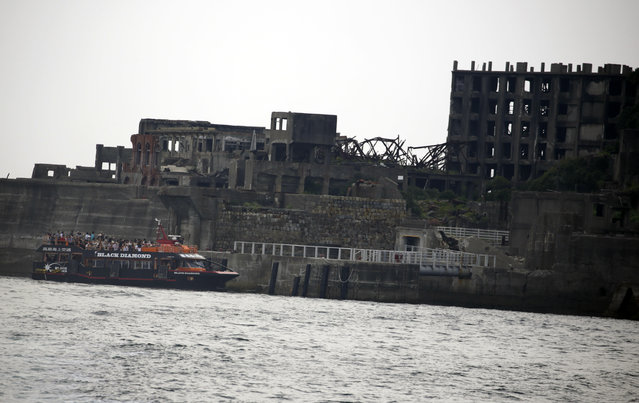
In this June 29, 2015 photo, a tourist boat arrives at Hashima Island, commonly known as Gunkanjima, which means “Battleship Island”, off Nagasaki, Nagasaki Prefecture, southern Japan. The island is one of 23 old industrial facilities seeking UNESCO's recognition as world heritage “Sites of Japan's Meiji Industrial Revolution” meant to illustrate Japan's rapid transformation from a feudal farming society into an industrial power at the end of the 19th century. UNESCO's World Heritage Committee is expected to approve the proposal during a meeting being held in Bonn, Germany, through July 9. (Photo by Eugene Hoshiko/AP Photo)
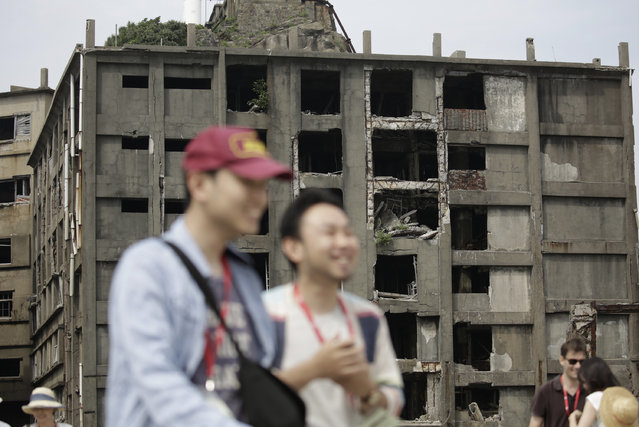
In this June 29, 2015 photo, forlorn buildings are seen at Hashima Island, commonly known as Gunkanjima, which means “Battleship Island”, off Nagasaki, Nagasaki Prefecture, southern Japan. (Photo by Eugene Hoshiko/AP Photo)
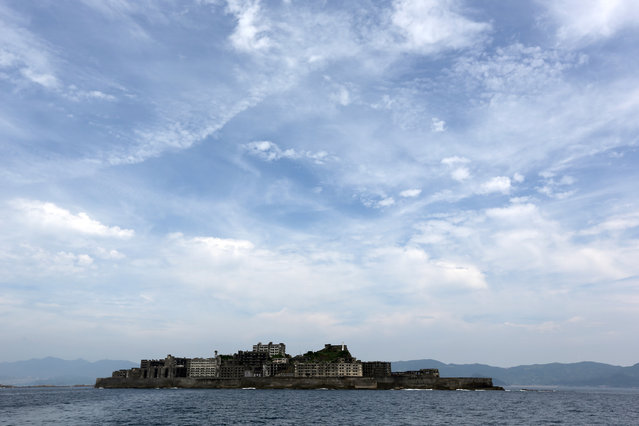
In this June 29, 2015 photo, Hashima Island, commonly known as Gunkanjima, which means “Battleship Island”, is seen off Nagasaki, Nagasaki Prefecture, southern Japan. (Photo by Eugene Hoshiko/AP Photo)
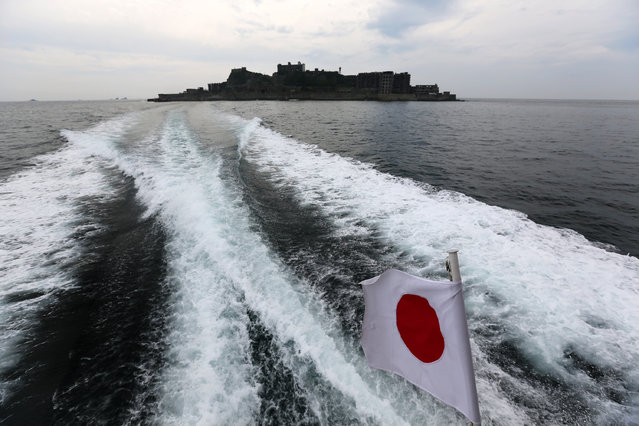
In this June 29, 2015 photo, a Japanese flag is hoisted on a tourist boat as Hashima Island, commonly known as Gunkanjima, which means “Battleship Island”, is seen off Nagasaki, Nagasaki Prefecture, southern Japan. (Photo by Eugene Hoshiko/AP Photo)
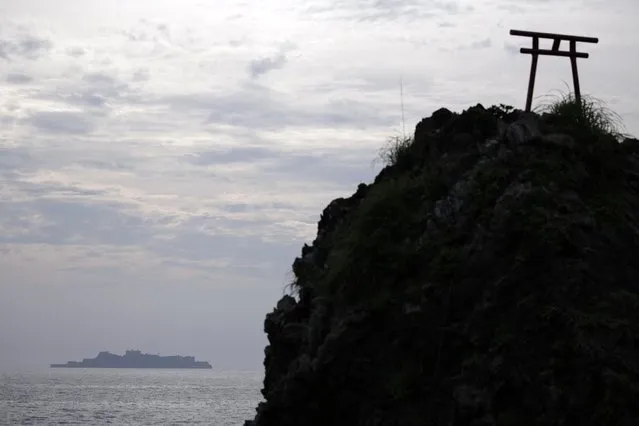
In this June 29, 2015 photo, Hashima Island, commonly known as Gunkanjima, which means “Battleship Island”, is seen off Nagasaki, Nagasaki Prefecture, southern Japan. (Photo by Eugene Hoshiko/AP Photo)
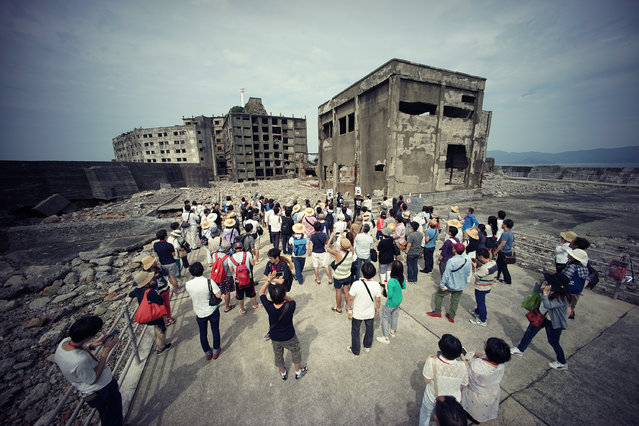
In this June 29, 2015 photo, tourists visit a part of Hashima Island, commonly known as Gunkanjima, which means “Battleship Island”, off Nagasaki, Nagasaki Prefecture, southern Japan. (Photo by Eugene Hoshiko/AP Photo)
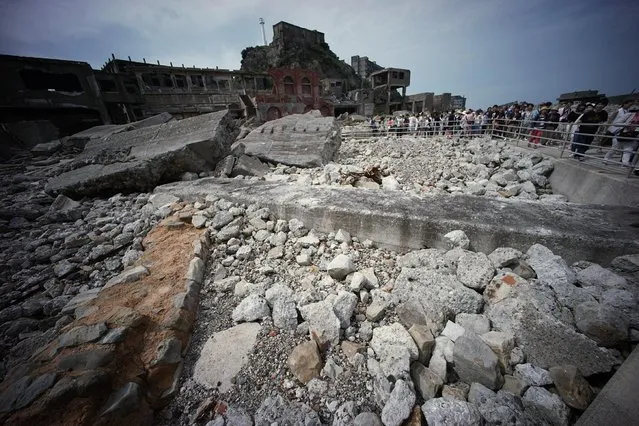
In this June 29, 2015 photo, forlorn buildings are seen at Hashima Island, commonly known as Gunkanjima, which means “Battleship Island”, off Nagasaki, Nagasaki Prefecture, southern Japan. (Photo by Eugene Hoshiko/AP Photo)
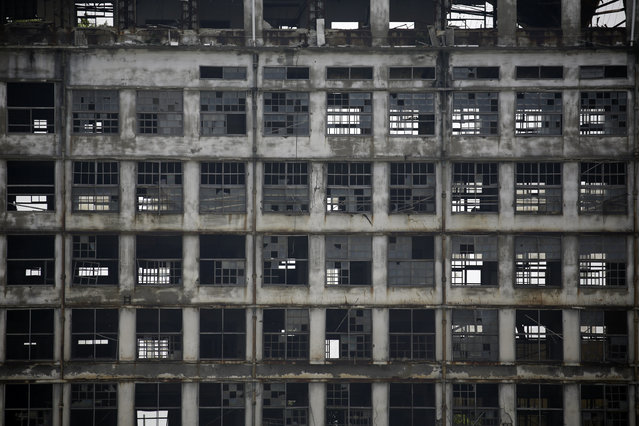
In this June 29, 2015 photo, a forlorn building is seen at Hashima Island, commonly known as Gunkanjima, which means “Battleship Island”, off Nagasaki, Nagasaki Prefecture, southern Japan. (Photo by Eugene Hoshiko/AP Photo)
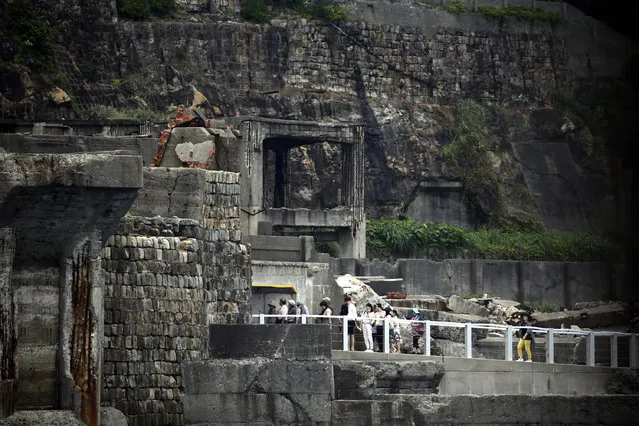
In this June 29, 2015 photo, tourists walk at the pier at Hashima Island, commonly known as Gunkanjima, which means “Battleship Island”, off Nagasaki, Nagasaki Prefecture, southern Japan. (Photo by Eugene Hoshiko/AP Photo)
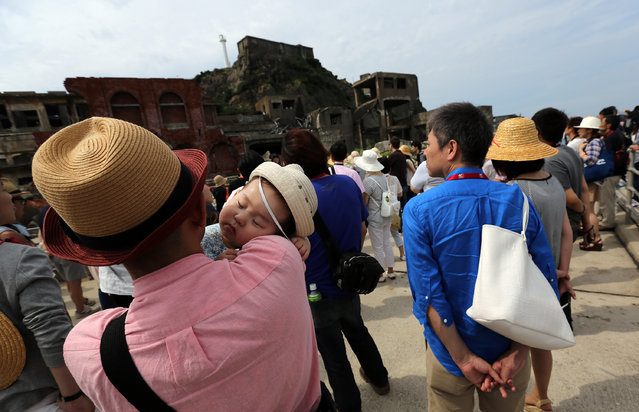
In this June 29, 2015 photo, tourists visit at Hashima Island, commonly known as Gunkanjima, which means “Battleship Island”, off Nagasaki, Nagasaki Prefecture, southern Japan. (Photo by Eugene Hoshiko/AP Photo)
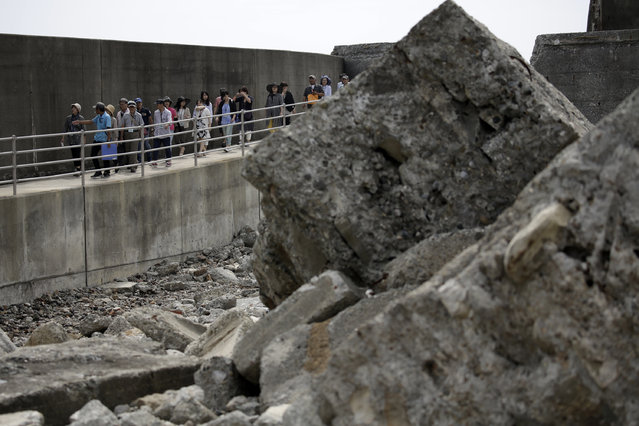
In this June 29, 2015 photo, tourists visit Hashima Island, commonly known as Gunkanjima, which means “Battleship Island”, off Nagasaki, Nagasaki Prefecture, southern Japan. (Photo by Eugene Hoshiko/AP Photo)
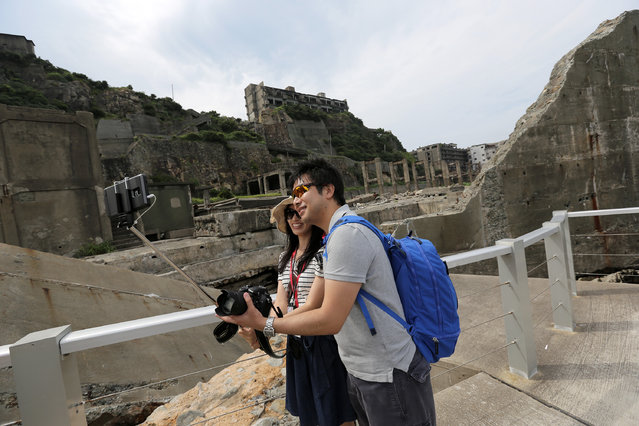
In this June 29, 2015 photo, tourists take a selfie at Hashima Island, commonly known as Gunkanjima, which means “Battleship Island”, off Nagasaki, Nagasaki Prefecture, southern Japan. (Photo by Eugene Hoshiko/AP Photo)
01 Jul 2015 13:41:00,
post received
0 comments
